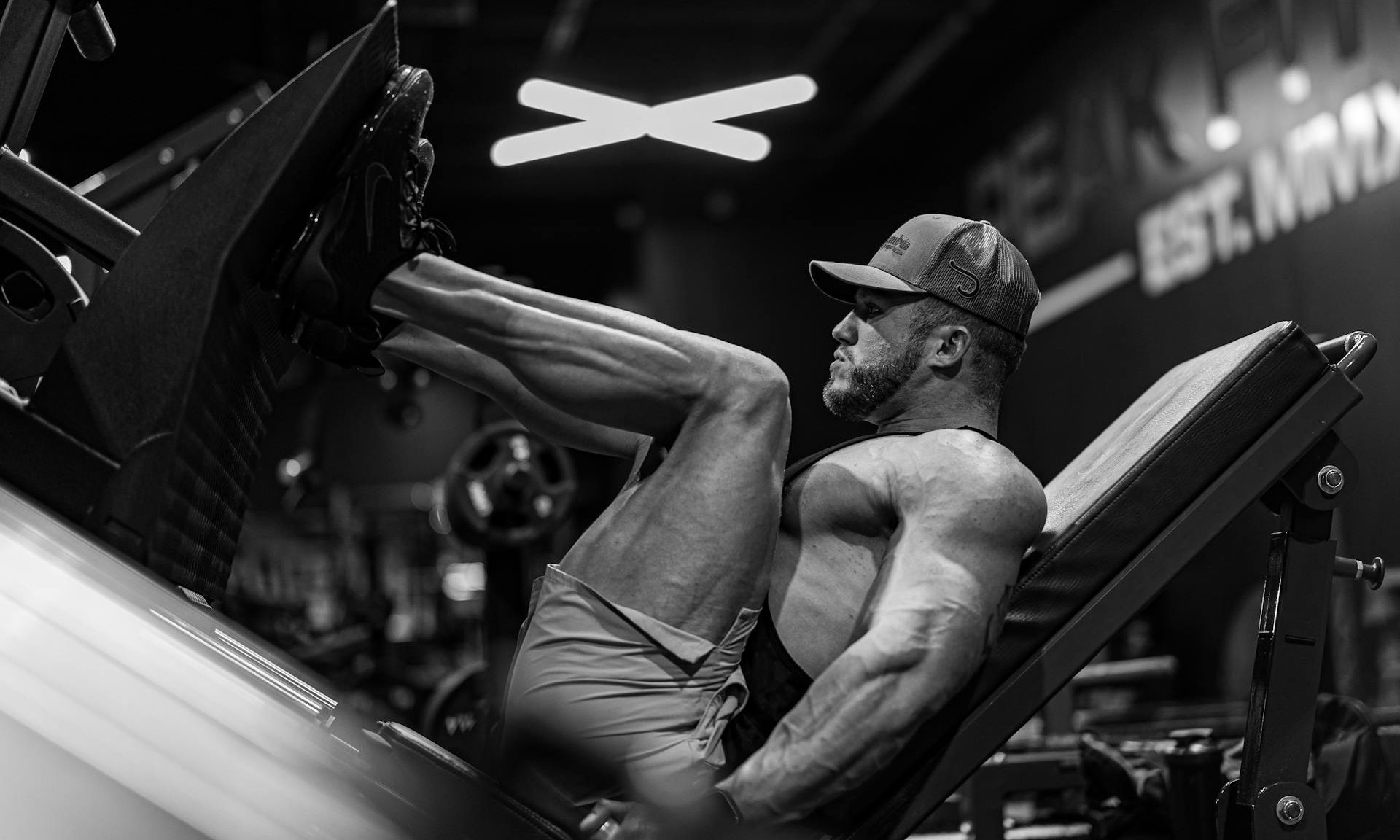
You don’t want to skip leg day and spend all of your time and energy on your upper body strength. Your legs carry you around all day, every day, and they shouldn’t be overlooked. The classic leg press exercise is one of the most popular for leg day, but it’s important to have proper form. Understanding more about this compound weight training exercise and the muscle work can help you to perform it safely and effectively. Here’s everything you need to know about the leg press.
What is a leg press?

The leg press is a machine exercise where you use your legs to push a weight or resistance away from you. There are two common types of leg press machines: horizontal and inclined. The horizontal is the standard version, whereas the inclined leg press machine has a seat that’s typically tilted at a reclining 45-degree angle, so you press your legs diagonally upward.
This leg-strengthening workout allows you to set the weight stack to your desired weight and makes an excellent addition to your machine-circuit workout routine.
What are the benefits of the leg press?

Studies reveal that regularly performing the leg press provides multiple benefits, including:
- Sculpting your thighs and derrière
- Improving stability, balance, and athletic performance
- Increasing bone density and strengthening your lower back and hip bones
- Increasing quadriceps and gluteal strength
- Improving functional ability so you can better perform daily activities
- Enhancing muscle endurance and the ability to sustain repeated muscle contractions
Adding squats, deadlifts, and leg presses to your workout routine is the best way to power up your leg muscles. You can work your way up to heavier weights with the leg press machine to develop your leg muscle strength over time. It’s also a rewarding exercise that doesn’t involve axial loading or stressing your spine. Axial loading refers to the exertion of force or pressure applied along your spine. Unlike a deadlift or squat, where you have the pressure from the weight and gravity on your spine, thanks to the positioning of the leg press machine, you’re using only your larger leg muscles.
The leg press is also a suitable exercise for beginners, as long as you choose the right weights for your ability.
What muscles does the leg press work?

The leg press works all of the bigger muscles in your lower body, including your quadriceps and hamstring muscles in your thighs and your gluteal muscles in your buttocks. While the bigger leg muscles do most of the work, your smaller supporting leg muscles also get a workout.
Leg press form

Having proper form when performing a leg press and adjusting the machine to fit your leg length and body size is especially important for safety and effectiveness. While you can work with higher reps and heavier weights, be careful not to overdo it with this exercise. Always start with a lower weight and advance to heavier weights as you become stronger over time.
Warming up before you start and using the proper technique can help reduce the risk of injury and boost your performance.
Here are some top tips to help you maintain the proper leg press form:
- Keep the movement slow and controlled.
- Your knees should be aligned with your toes rather than bowing in or out.
- Try to keep your knees at least hips-distance apart and avoid locking your knees as you reach the top of the movement (keep a slight bend to your knees to avoid straining your joints).
- Try to make sure your head and shoulders are supported, and avoid straining your neck.
- Engage your core and upper body muscles throughout the movement to ease any stress or pressure on your lower back.
- Squeeze your glutes and your shoulder blades.
Cooling down after your workout is one of the best ways to aid muscle recovery and ease muscle soreness.
How to perform a leg press

Here’s how to perform a leg press:
- Adjust the machine for your body size and height.
- Support your back against the backrest and select the appropriate weight.
- Place your feet about a distance apart on the platform.
- Carefully use your legs to press or push the platform away from you until your knees are straight.
- Hold the position before slowly lowering the platform back to the starting position.
- Repeat for your desired number of reps.
The leg press movement is proven to enhance your lower body strength. Level up your leg day with this compound weight training exercise.



